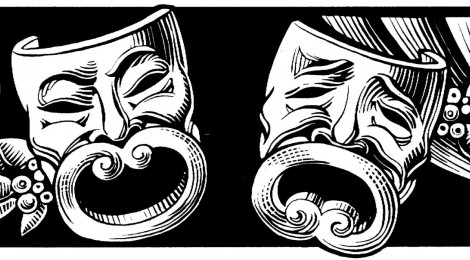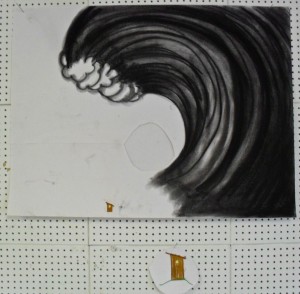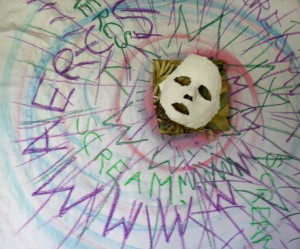
Expressive Arts in the Treatment of Trauma
The use of expressive arts to treat trauma is known to be a helpful therapeutic intervention for many individuals. The Trauma and Attachment Report interviewed Fran Harwood, M.A., a Toronto psychotherapist who has been working in the field for over thirty-five years, about her experiences using the expressive arts to help heal trauma.
Q: What led you to your interest in Expressive Arts Therapy?
A: I have always been interested in the arts and have been very involved with them myself. In the early ‘90s, I realized that I did not want to sit in a chair all the time. I knew that something had to change if I was going to continue to be a psychotherapist. I trained for a year in Expressive Therapies at Lesley University, and I was one of the original team that founded ISIS Canada here in Toronto.
Q: What inspired your interest in training in the areas of trauma and attachment?
A: Again in the ‘90s, people were beginning to explore new ways of working with trauma. I did the full EMDR training and qualified as a trauma specialist. I continue to be fascinated by the neurological, somatic, and attachment research in the areas of trauma. It was becoming clear that traumatic incidents that happen to people who also have an insecure attachment tend to have more of a lasting negative impact. And in my clinical experience, the majority of people who are traumatized also have insecure attachment histories.
Q: What are some of the most common themes that you encounter when working with your clients who have a history of attachment related trauma?
A: One of the most common themes is the issue of trust and safety where the client has not been able to rely on the parent or caregiver in a consistent way. I’ve had clients ask me to stand in the farthest part of the room while they would engage in some form of art; I would then be allowed to come closer little by little. Another central theme is the denial of need, as seen with the avoidant client. I am remembering one particular woman I worked with whose first drawing was of a very rigid baby, held in a vividly disconnected way. After making that drawing, we had to put it away for a while. She then began to do large paintings, one of which we hung on the wall. There was a period of time where every so often she would take the painting apart and remake it. At a certain point, we re-introduced the picture of the baby, and the baby became a central part of the emerging installation. She recreated what the baby needed in the image, until one day she felt it was complete.
Q: Are there certain art materials and modalities that evoke different emotions or create specific responses in your clients?
A: Yes, some art modalities are easier to begin with, particularly for people who haven’t had a lot of experience working within the arts. In general, depending on where the client is at when they begin therapy, it’s much less threatening to do a drawing than it is to sing or move. Even before drawing, making a little installation or working in a sand tray are less vulnerable places to start. The wonderful thing about this form of therapy is you don’t have to have skill or “talent.” Later on, when we’ve established a strong connection and trust, and when the client has established resources for grounding and containing, it becomes easier and safer to do things like sounding and moving.
Q: What is it about Expressive Arts Therapy that makes it one of the many helpful approaches when working with clients who have experienced trauma?
A: Psychologist Allan Shore suggests in his article, The right brain implicit self: A central mechanism of the psychotherapy change process, that “right brain implicit non-verbal affect-laden communication directly represents the attachment dynamic embedded within the alliance.” For art therapy, this means that the arts help us access non-verbal material by tapping into our implicit experience as coded in sensation and imagery. Another helpful aspect of the arts is that clients are able to put their experiences outside of themselves which are then reflected back in the imagery, movement or sound. Finally, the aspect of play in the arts is important for reconstructing a healthy attachment experience. A client may be painting on their own, or sometimes I will join in. Either way, they are witnessed and joined in the play. In that witnessing, and being with, there is a new kind of attachment experience that develops. This playful exploration can also happen with movement, sound or drama.
Q: Have you ever had any experiences where the work within the arts has overwhelmed the client?
A: Having the client become overwhelmed does sometimes occur because of the material surfacing and being experienced. If someone has decided to recreate some aspect of the trauma in drawing, painting, or words, and the experience becomes overwhelming, it can be helpful to take the creation, wrap it in a piece of containing fabric or a box and find a place in the room to keep it that feels safe to the client. The client might also choose a figure that acts as a guardian while neither of us is there. If we have put the resources in place from the beginning, there is always a way to help bring clients back from an overwhelming experience, and it’s a good tool for them to discover and learn.
Q: What might you offer to other therapists, especially those early in their training and careers, as the most important thing to remember when using the arts with traumatized clients?
A: If you’re working with the arts, you also need to know how to work with trauma, and only then can you use the arts in the service of the client. So if someone tells you about something distressing, you can’t push them straight to the wall to begin drawing a picture of it. You need to make sure that they have all the basic resources such as containment, re-stabilizing abilities, boundaries, and grounding. All of these skills can be explored expressively. While you may investigate resistance, you need to listen and trust the client. If they don’t feel they are ready to explore the trauma and the feelings that come up around it, then you need to be sensitive to this, and explore a different method first.
Q: On a personal level, what have you learned most from your work with your clients?
A: I’ve learned how powerful the arts can be. We don’t have to be healed to be creative. We can bring our creativity right from the heart, right where the agony is. I’m thinking of one woman I worked with…I’m getting teary as I say it…one day she called me and said, “I have broken glass. I want to cut myself, what should I do?” Fortunately, I was able to see her right then. She made a big painting and she embedded the glass in the painting. She said that somehow the act of creating gave her as much as the cutting did. She had created something that was really beautiful out of the agent of the pain itself. The power of that is astonishing.
-Michelle Denis MacDougall, Contributing Writer







What a great interview! Personal sharing and professional expertise side by side, with accessible yet complex language. More of it.
Thank you for the great insights and information about expressive arts therapy. I have been thinking of pursuing a career in this field as I have been through as well as helped many many people in my life through hardship, trauma. There is nothing more beautiful than to see a human being awakening to his/her own potential, positive/creating energies and love inside. Fortunate are those people that can touch other humans deeply and helping them ‘melt away’ their own roadblocks to their own prosperity. Thank you for reminding me of these thoughts… keep them coming….:)